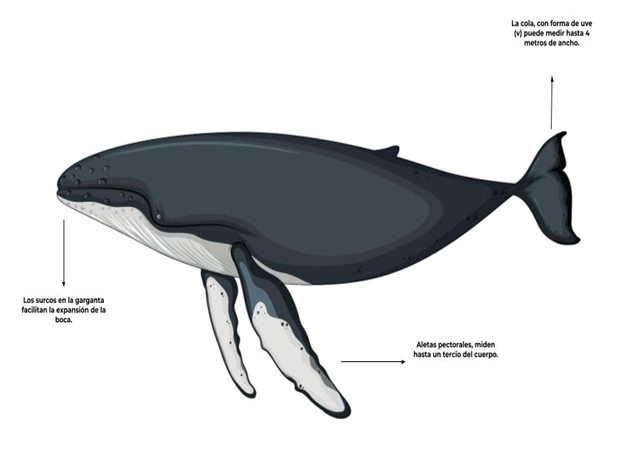

The humpback whale
Among the different cetacean species are the largest mammals on the planet. This family of species is composed of two main groups: toothed whales, such as sperm whales and orcas, and baleen whales such as blue and humpback whales. Whales, in this case, are part of the baleen group as they have comb-like structures that they use as a filter to strain food, typically composed of krill, from seawater.


The humpback whale (Megaptera novaeangliae) with a length of 12 to 16 meters and a weight between 25 and 40 tons, is a species characterized by its elongated and robust body. It is known as the “humpback” due to the shape of its dorsal fin and the way it dives by arching its body. It is interesting to know that the pigmentation on its skin and the markings on its tail are unique to each individual, just like fingerprints in humans.
This species can be sighted on the Colombian Pacific coast from June to October during their migratory expedition of almost 8500 kilometers from Patagonia in search of warmer waters to reproduce and have their calves. Due to their slow swimming and jumping habit, they are one of the most interesting and easy-to-spot whales.
Did you know…?
The humpback whale is the third heaviest, fourth longest, and one of the most characteristic due to the folds in its throat.


Information gathered from "The Guide to Humpback Whale Watching in Colombia," published by the Ministry of Commerce, Industry, and Tourism in 2012.

0 Comments